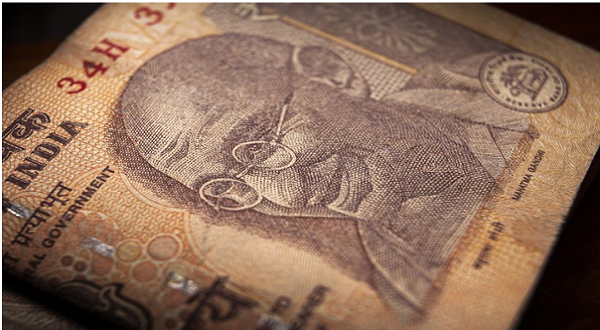
A Country In Trouble: Why India's Strongest Commodities Are Receiving Scepticism
CIOReviewindia Team | Tuesday, 03 December 2019, 08:55 IST

Despite having one of the longest-standing histories as far as commodity trading is concerned, years of a tumultuous history have led to the country facing a diminishing trade network. From periods of commodity scarcity to foreign rule, droughts and changing government policy, they have faced more turbulence in their exchanges than most other countries but with the industry creeping back, it’s a market that more and more local and foreign traders are starting to get involved with yet again.
However, it’s been a slow process and some of India’s strongest commodities are still facing scepticism. Amongst those using trade commodities with a Forex broker, or those following the market independently, knowing whether to trust the currency in its current state, enough to make bold moves in the market, seems daunting. To help, here are some of the latest developments.
Gold Prices Remain Weak After A Two Month Slump
Following from a two-month low, gold prices in India remain weak with little sign that they might improve in the coming days. There was a slight uptick, with prices rising to ₹38,169, but this is still a ₹1,800 per 10-gram drop from the highs we saw in September. This isn’t necessarily India’s doing, however – globally, gold prices have actually risen, weakening the Indian Rupee against the likes of the USD and this could all be due to the recent concerns regarding a US-China trade deal.
The worry is that the trade deal will be delayed following the USA’s move to pass legislation supporting Hong Kong protestors which Beijing publicly condemned. For this reason, we saw a rise of 0.1% in the price of Spot gold, to $1,472 per ounce. For India, this set them back rather than forward, potentially due to the rupee depreciation against the U.S Dollar.
India’s Exports Have Declined by 1.11% in October
Reports have now been released stating that India’s exports have declined over the past two months, dropping 1.11% in October alone. Deemed a ‘worrying economic slowdown’ by Grain Mart News, 18 of India’s main sectors have experienced a negative growth last month. Some of the key markets that have experienced the biggest drops include:
- Petroleum Products – 14.6%
- Carpet – 17%
- Leather Products – 7.6%
- Rice – 29.5%
- Tea – 6.16%
It’s not just exports that have seen a decline, either. In fact, it’s been reported that import figures saw a decline of 16.31% compared to the previous year. Products such as petroleum and crude products, coal and coke, transport equipment, electronic goods and machinery all experienced drops as far as import was concerned. However, despite the weak pricing, gold import increased by 5% last minute.
The reasoning behind these drops seems to be due to trade tensions across the globe. Sharad Kumar Saraf, president of the Federation of Expert Organisation claimed that excessive protection policies are also to blame for the decline in India’s imports and exports, with Mohit Singla, chairman of the Trade Promotion Council of India, claimed that the decrease in exports had weakened demand within India itself.
Industry Sceptical As India Looking To Relax Norms To Attract Global Coal Miners
India has recently announced that they are planning to lower advance payments and offer larger mining blocks to global companies. This is designed to attract an increase number of investors into the coal sector for the very first time in the country’s history, but there is no escaping the scepticism that is now surrounding the move. Sources within the industry itself have claimed that the measures taken might not be enough to attract the international miners that India is hoping to capture.
By floating global tenders, India could end Coal India Ltd’s near-monopoly on coal and fuel within the country. The move, and resulting auctions are designed to reduce the country’s coal imports, with intentions to capture Glencore PLC, BHP Group, Anglo American PLC and Peabody Energy
The initial upfront payments that companies had to pay was 10% of the total cost, which was a turn-off for a lot of companies. By lowering the size of this first payment, they could attract more companies who may be able to better afford a stake in India’s industry. However, there are strict rules as to what interest companies could use the mined coal for, with restrictions on selling the coal on the open market. This lack of flexibility could very well be one of the core issues for attracting attention to the mining industry.
While India is far from being in serious trouble, the country needs to make intelligent moves over the next few years to more effectively grow their economy at a rate that can compete with some of the world’s greatest. However, with gold prices experiencing a low, exports declining and their efforts to expand their coal markets seemingly not working, there is quite some way to go for the country before they can comfortably compete.
CIO Viewpoint
Digital Disruption - To Drive Next Wave Of...
By Jatinder Bansal, AVP & Head IT, ReNew Power Ventures Ltd
IT Services Outsourcing - Challenges to Conquer
By Umasankar Pandurangan, AGM- IT, HPCL- Mittal Energy Limited
Hadoop Uncovering Hidden Patterns to Make...
By Priyadarsanie Ramasubramanian, Head - Engineering and Technology, Tesco
CXO Insights
What is SF6 and why is it important?
By Guilherme Susteras, IEEE Senior Member
Unlocking Growth Via Digitalization Of The...
By Shikhar Gupta, Director, PwC
From Power to Lifestyle - The Future of Solar...




.jpg)
.jpg)




